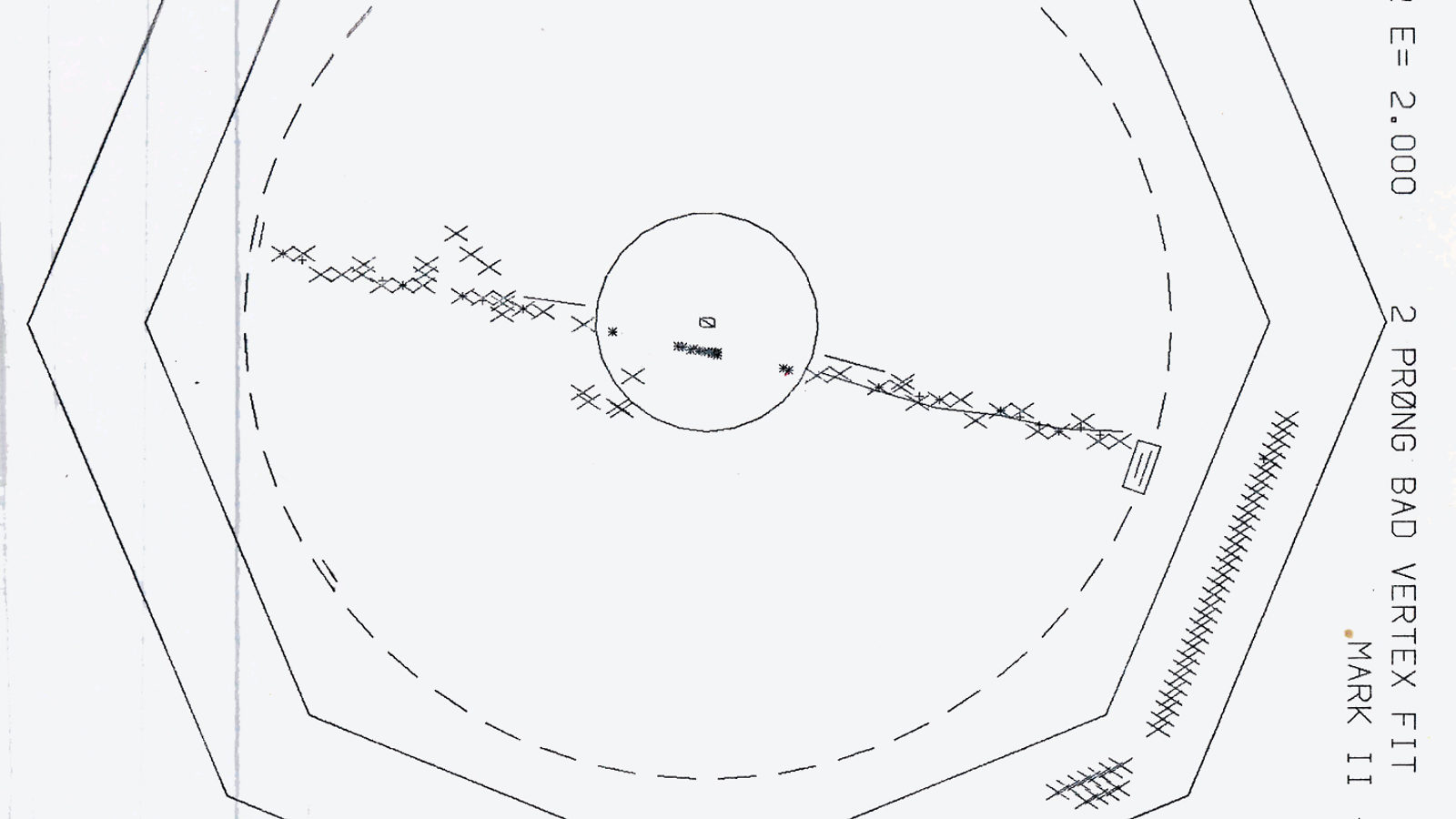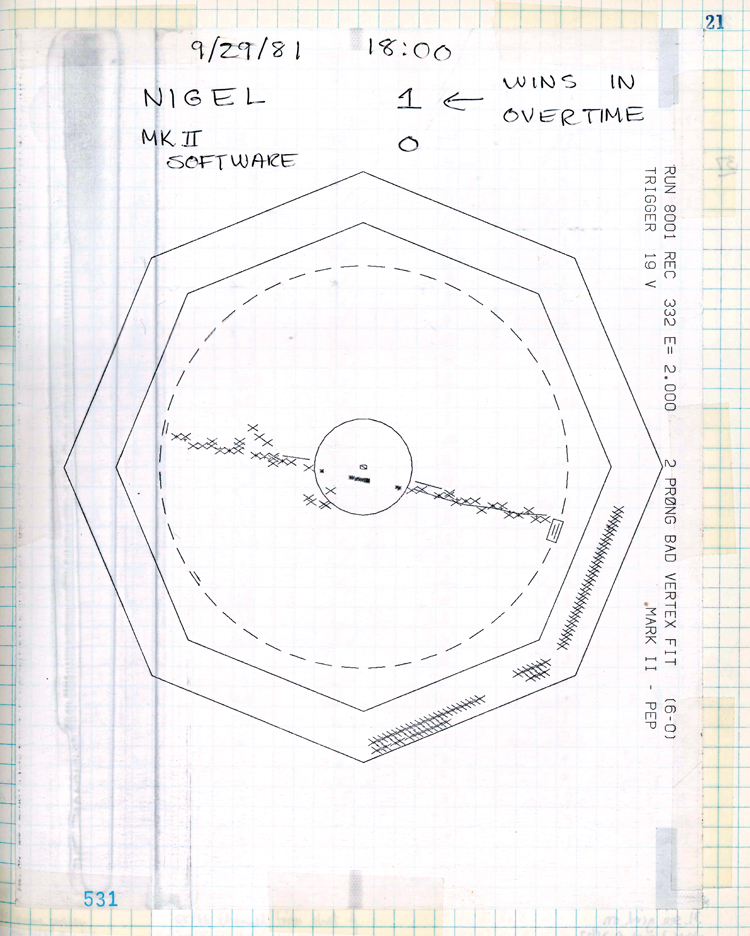John Jaros and his collaborators took on the challenge. “We built a precision drift chamber–the first collider vertex detector,” he says. The device had to pinpoint two vertices: a tau’s point of creation and its point of decay.
Jaros’s team installed the new precision instrument at the center of the Mark II detector in 1981. That September, postdoc Nigel Lockyer overcame the intricacies of the Mark II software and, for the first time, transferred signals from the vertex detector to Mark II’s data acquisition system. This logbook shows his success–a cosmic muon traversing the entire Mark II detector–and notes “Nigel wins in overtime.” The vertex chamber (solid circle) had recorded with unprecedented precision the muon's path (small crosses).
The Mark II collaboration went on to map tau vertices and found the tau to wink into and out of existence over a scant 0.6 millimeters–long enough to scrutinize. By the following summer, the team reported a tau lifetime of about one third of a millionth of a millionth second, or 0.3x10-12sec. Later, the collaboration used the chamber in one of the first lifetime measurements of the B meson, a composite short-lived particle containing a bottom quark. Today, vertex detectors–now using silicon technology–are the centerpieces of high-energy collider experiments around the world.




